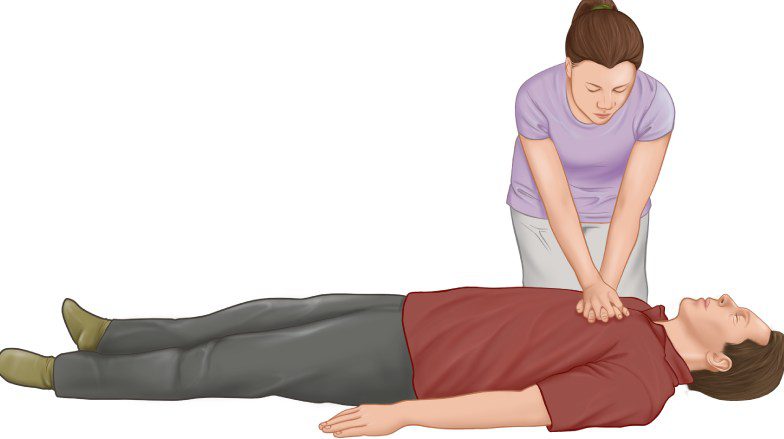
It’s with good reason that most people are terrified of emergencies. From heart attacks to allergic reactions, anything can happen–and it tends to be when we least expect it.Considering that, it becomes incumbent on each of us to learn emergency first aid at some point in our lives. Not only does knowing CPR help save a person’s life, but it instills in you the confidence to take charge in any emergency.Want to learn how to perform CPR and get out of emergency situations safely? Then this guide’s for you!
What Is CPR?
CPR is a lifesaving technique used to restore breathing and circulation in a person who has suffered cardiac arrest. Cardiac arrest is a sudden stoppage of the heart, which can happen due to various reasons like a heart attack, drowning, suffocation, electrocution, or choking. If a person does not receive immediate medical attention, they can die within minutes.
CPR involves two basic steps – chest compression and rescue breathing. Chest compressions aid in the circulation of blood to the brain and other vital organs. Rescue breaths provide oxygen to the lungs, allowing the person to breathe.
When to Perform CPR?
CPR should be performed immediately when a person is unresponsive and not breathing or only gasping. It’s also necessary if a person is unconscious and not responding to any stimuli, like a pinch or a shake.
How to Administer CPR to Help Save a Life
Here are the basic steps for performing CPR:
Call 911
Before starting CPR, call 911 or ask someone nearby to do so. Inform the emergency operator about the situation and the person’s condition.
Position the Person and Check for Breathing
Place the person on their back on a firm surface, preferably on the ground. Tilt the person’s head back, lift their chin, and check for breathing. If the person is not breathing or only gasping, begin chest compressions.
Perform Chest Compressions
Place your hands in the center of the person’s chest, over their breastbone. Interlock your fingers and push down hard and fast, at a rate of 100-120 compressions per minute. Allow the chest to recoil between compressions.
Provide Rescue Breaths
After 30 compressions, give two rescue breaths. Tilt the person’s head back, pinch their nose shut, and give a slow breath into their mouth, making sure the chest rises.
Repeat
Continue performing compressions and rescue breaths at a ratio of 30:2 until medical help arrives or the person starts breathing on their own.
Essential First Aid Supplies and Equipment
In any emergency, it’s essential to have the right supplies and equipment on hand to help save lives. It’s important to stock up on essential first-aid items. Having an emergency first aid kit on site is essential to be able to properly tend to any injuries.
Every situation is unique and different, so it’s important to have the skills and knowledge to help properly assess and address the situation. Remember, investing in emergency first aid training through Cprcertificationnow.com can be the difference between life and death.
Save Lives: Learn Emergency First Aid Skills Today
The importance of emergency first aid cannot be overstated. In an emergency, a few moments of correct care can make an immense difference. Knowing basic CPR skills and when to dial 911 can be life-saving. If you are interested in learning more, we recommend enrolling in a course offering first aid and CPR certification.For more articles like this, check out the rest of our blog today!
